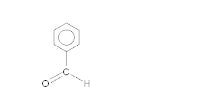Cannizzaro reaction
| Cannizzaro reaction | |
|---|---|
| Named after | Stanislao Cannizzaro |
| Reaction type | Organic redox reaction |
| Identifiers | |
| Organic Chemistry Portal | cannizzaro-reaction |
| RSC ontology ID | RXNO:0000218 |
The Cannizzaro reaction, named after its discoverer Stanislao Cannizzaro, is a chemical reaction which involves the base-induced disproportionation of two molecules of a non-enolizable aldehyde to give a primary alcohol and a carboxylic acid.[1][2]
Cannizzaro first accomplished this transformation in 1853, when he obtained benzyl alcohol and potassium benzoate from the treatment of benzaldehyde with potash (potassium carbonate). More typically, the reaction would be conducted with sodium hydroxide or potassium hydroxide, giving the sodium or potassium carboxylate salt of the carboxylic-acid product:
- 2 C6H5CHO + KOH → C6H5CH2OH + C6H5COOK
The process is a redox reaction involving transfer of a hydride from one substrate molecule to the other: one aldehyde is oxidized to form the acid, the other is reduced to form the alcohol.[3]
Mechanism

The reaction involves a

Overall, the reaction follows third-order kinetics. It is second order in aldehyde and first order in base:
- rate = k[RCHO]2[OH−]
At very high base a second path (k') becomes important that is second order in base:
- rate = k[RCHO]2[OH−] + k'[RCHO]2[OH−]2
The k' pathway implicates a reaction between the doubly charged anion (RCHO22−) and the aldehyde. The direct transfer of hydride ion is evident from the observation that the recovered alcohol does not contain any deuterium attached to the α-carbon when the reaction is performed in the presence of D2O.h
Scope
Due to the strongly

A solvent-free reaction has been reported involving grinding liquid 2-chlorobenzaldehyde with potassium hydroxide in a mortar and pestle:[7]

Variations
In the Tishchenko reaction, the base used is an alkoxide rather than hydroxide, and the product is an ester rather than the separate alcohol and carboxylate groups. After the nucleophilic base attacks an aldehyde, the resulting new oxygen anion attacks another aldehyde to give a hemiacetal linkage between two of the formerly aldehyde-containing reactants rather than undergoing tetrahedral collapse. Eventually tetrahedral collapse does occur, giving the stable ester product.
Certain ketones can undergo a Cannizzaro-type reaction, transferring one of their two carbon groups rather than the hydride that would be present on an aldehyde.[8]
See also
- Formose reaction - slow self-reaction of formaldehyde in hydroxide to form aldose sugars
- Benzoin condensation - self-reaction of aldehydes to give α-hydroxy ketones
- Meerwein–Ponndorf–Verley reduction and Oppenauer oxidation - related interconversions of ketones and secondary alcohols via disproportionations
References
- .
- .
- (Review)
- ISBN 978-0-471-72091-1
- ^ W. C. Wilson (1941). "2-Furancarboxylic Acid and 2-Furylcarbinol". Organic Syntheses; Collected Volumes, vol. 1, p. 276.
- S2CID 101343477.
- doi:10.1021/ed086p85
- PMID 20859600.


